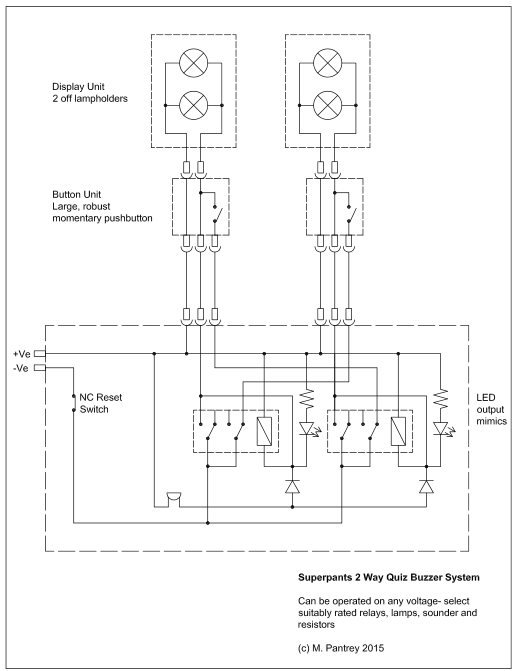I first built a set of quiz buzzers a few years ago, but have
recently significantly modified them, particularly for use as part of a messy
games day for a Scout camp Gameshows. The system is built almost entirely from scrap
or parts salvaged from old equipment.
The system consists of two contestant stations. These are
physically based on some offcuts of 12mm ply, mounted to a base made from the
sides of a cable drum and connected together using a pair of key-klamp bases and
a length of scaffold bar. The top surface has a team identifier made from a
length of square drainpipe and covered in sparkly holographic book covering
sticky backed plastic. Two industrial indicator lamps are mounted to the tube to
identify which team responded first. Behind this is mounted a surplus ‘big red
knob’, an industrial palm switch. These two parts are cable together and a cable
run back to a central compere control.
I looked at using a commercial kit for the central control,
but ended up deciding that once I’d substituted a commercial circuit with
external relays to drive more powerful lights and buzzers and ended up with a
dual voltage unit, I would be better building a relay based logic system from
scratch. Despite some searching in the web, I didn’t find suitable circuit so
developed my own. Details are on the PDF drawing that can be downloaded from
this site if you want to build your own.
The circuit can be built to operate on any voltage desired,
dependent on the component choices. I chose 24V as I had suitable industrial
lamps, sounder and DPCO relays and holders in stock. The central control was
built into a surplus box wiring up each part directly which was effective,
albeit a little untidy.
In use, the system worked very well. The only downside is that outside the sounder could have been louder, but that is easily solved.
The Button and Display
Quiz Buzzers in Use
